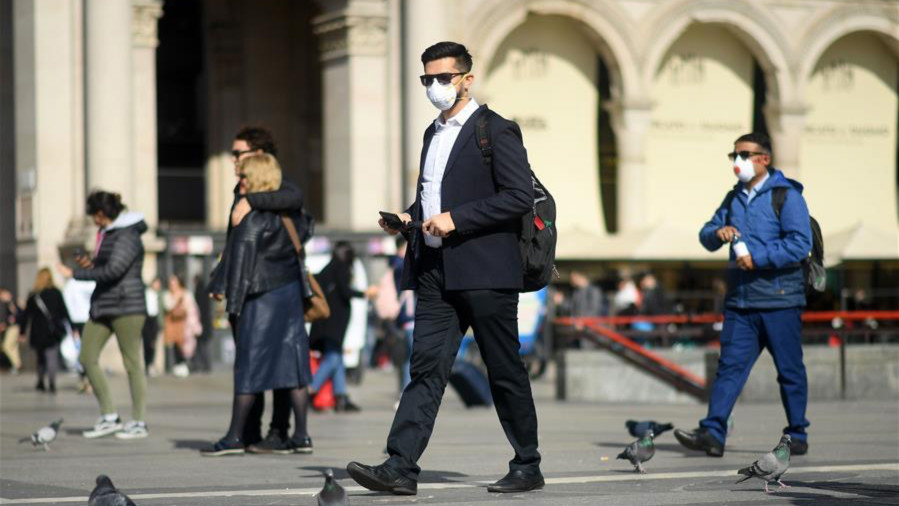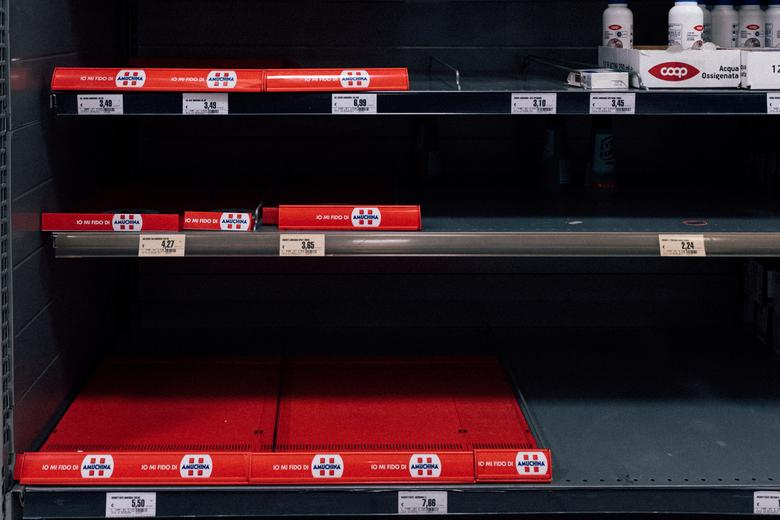
People wear masks as they walk in Milan, Italy, February 24, 2020. /Xinhua
People wear masks as they walk in Milan, Italy, February 24, 2020. /Xinhua
Editor's note: Jonathan Arnott is a former member of the European Parliament. The article reflects the author's opinions, and not necessarily the views of CGTN.
From the Mediterranean coast to the Baltic Sea, it is possible to drive through over 20 contiguous countries without ever being stopped at a border. The free movement of people, in its purest embodiment within the Schengen Area, covers countries both within and outside of the European Union. Only the Republic of Ireland, together with the United Kingdom, decided not to join – though neither shares a land border with mainland Europe. Given the scale of the COVID-19 outbreak in Northern Italy, by far the largest so far within Europe, it's not surprising that questions have arisen about the potential for cross-border infection.
Healthcare systems vary dramatically from country to country, even within Europe; the COVID-19 virus knows no such borders. Freedom of movement can, by law, be suspended temporarily "in the event that a serious threat to public policy or internal security has been established." So far, Italy has steadfastly refused to suspend the provisions of the Schengen Agreement and reintroduce border controls along its Northern border.
The decision has raised eyebrows; across the Atlantic, a New York Times headline screams "Coronavirus nightmare could be the end for Europe's borderless dream." European federalists, for whom open borders are almost an article of faith, seek to stick to Schengen no matter what. Right-wing populists call for borders to be completely closed. It is entirely expected that both sides of this debate tend to approach this issue in the same way as they have approached Schengen generally: the system is a trade-off between convenience and control.

Empty shelves are seen inside a shop in San Fiorano, Italy,February 22. /Reuters
Empty shelves are seen inside a shop in San Fiorano, Italy,February 22. /Reuters
In my view, in this particular situation there exists a halfway house between the two options: to treat a land border in the same way as an international flight from a country with a significant number of infections. Temperature screening might be an imperfect science, resulting in occasional false positives and false negatives, but such precautions are far better than doing nothing.
Dr. Clare Wenham, of the London School of Economics Global Health Initiative, said "travel restrictions don't work: people find another way around it. It might only slow the virus down." This is certainly true, though one of the key strategic objectives is precisely that: to slow it down, in the hope that more effective treatments might be found or a vaccine might be made available.
Antiviral medications are in the testing phase to determine whether they improve the overall prognosis; a vaccine has potentially been found but cannot even be trialed until April. The use of border infrastructure to identify potential cases would, I believe, be a proportionate response.
Outside Italy, the COVID-19 is broadly under control in Europe – for now. Most infections are traceable; the new cases in Denmark and the United Kingdom are directly linked to travelers returning from Italy and Tenerife. Germany, though, has sounded the alarm: they have partially been unable to trace the history of one sufferer. Lacking the so-called "Patient Zero", not knowing the source of a chain of infection, disease control becomes a far more challenging task.
In the United Kingdom, following a meeting of the UK's high-level emergency COBRA committee, Health Secretary Matt Hancock updated Parliament by explaining the British four-step plan to "contain, delay, research and mitigate" the virus. Within the European Union, Health Commissioner Stella Kyriakides seeks EU co-ordination of national healthcare responses.
This is an aspiration rather than policy: the European Union has no direct control over national healthcare systems. Even so, with some European nations having fewer than a million people, they will certainly look somewhere – whether it is to the larger powers or to the European Union – for guidance on how to respond.
Yet whilst a virus knows no borders, neither does research. We live in a globally inter-connected age where the genetic code of a virus can be shared at the click of a button with scientists around the world. The best practice is shared between countries. The appropriate response to the COVID-19 is not a British response, or an Italian or European or Chinese response. It is a global response.
(If you want to contribute and have specific expertise, please contact us at opinions@cgtn.com.)